The most threatened of them all
A silent crisis for amphibians in Africa
Text and photographs Jeanne Tarrant
We are all becoming more aware about the biodiversity crisis and that we are currently in the 6th extinction event on earth, with current extinction rates up to 1000 times higher than the natural ‘background’ rate. We know that many species and habitats are threatened, mostly due to human activity, and unsustainable rates of consumption by an ever-increasing human population. But what does any of this mean? Often the terms ‘threatened’ and ‘endangered’ are used interchangeably, and it is important to understand these terminologies when talking about the IUCN Red List. Established in 1964, Red List is coordinated by the International Union for the Conservation of Nature (IUCN) and is the most comprehensive gathering of data to understand the extinction risk status of the world’s animal, plant and fungal species. To date, over 160,000 species have been assessed. The Red List, sometimes referred to as the Barometer of Life, is the best indicator we have of the health of the world’s biodiversity. It is also critical in directing conservation efforts and helping prioritise where our limited resources are directed. It helps inform and catalyse action for biodiversity conservation and policy change, guiding protection of the natural resources we need to survive. It provides information about range, population size, habitat and ecology, use and/or trade, threats, and conservation actions that will help inform necessary conservation decisions. The IUCN Red List is used by government agencies, wildlife departments, conservation-related non-governmental organisations (NGOs), natural resource planners, educational organisations, students, and the business community.
“The IUCN Red List tells us where we ought to be concerned and where the urgent needs are to do something to prevent the despoliation of this world. It is a great agenda for the work of conservationists.”
SIR DAVID ATTENBOROUGH
Currently, there are more than 166,000 species on The IUCN Red List, with more than 46,300 species assessed as threatened with extinction, including 44% of reef building corals, 41% of amphibians, 38% of trees, 37% of sharks and rays, 34% of conifers, 26% of mammals, 26% of freshwater fishes and 12% of birds. The term threatened incorporates the highest threat status levels, namely ‘Critically Endangered’, ‘Endangered’, and ‘Vulnerable’. Additional categories include ‘Near Threatened’, ‘Extinct’, ‘Extinct in the Wild’, ‘Least Concern’, ‘Data Deficient’ and ‘Not Evaluated’. Data Deficient species are those for which we simply do not have enough information to accurately make an assessment, and ‘Not Evaluated’ includes newly described species that have not yet been assessed. This ‘ladder towards extinction’ provides an indication of how close to extinction a species is. Directing conservation efforts towards those species that are most highly threatened not only helps to prioritise limited resources, but many highly threatened species also act as ‘umbrella’ or ‘flagship’ species and by protecting them and their habitats, many other species can be protected too. The Red List also plays a key role in identifying important areas to protect, for example, Key Biodiversity Areas (KBAs), Alliance for Zero Extinction Sites (AZEs), and Important Bird Areas (IBAs).
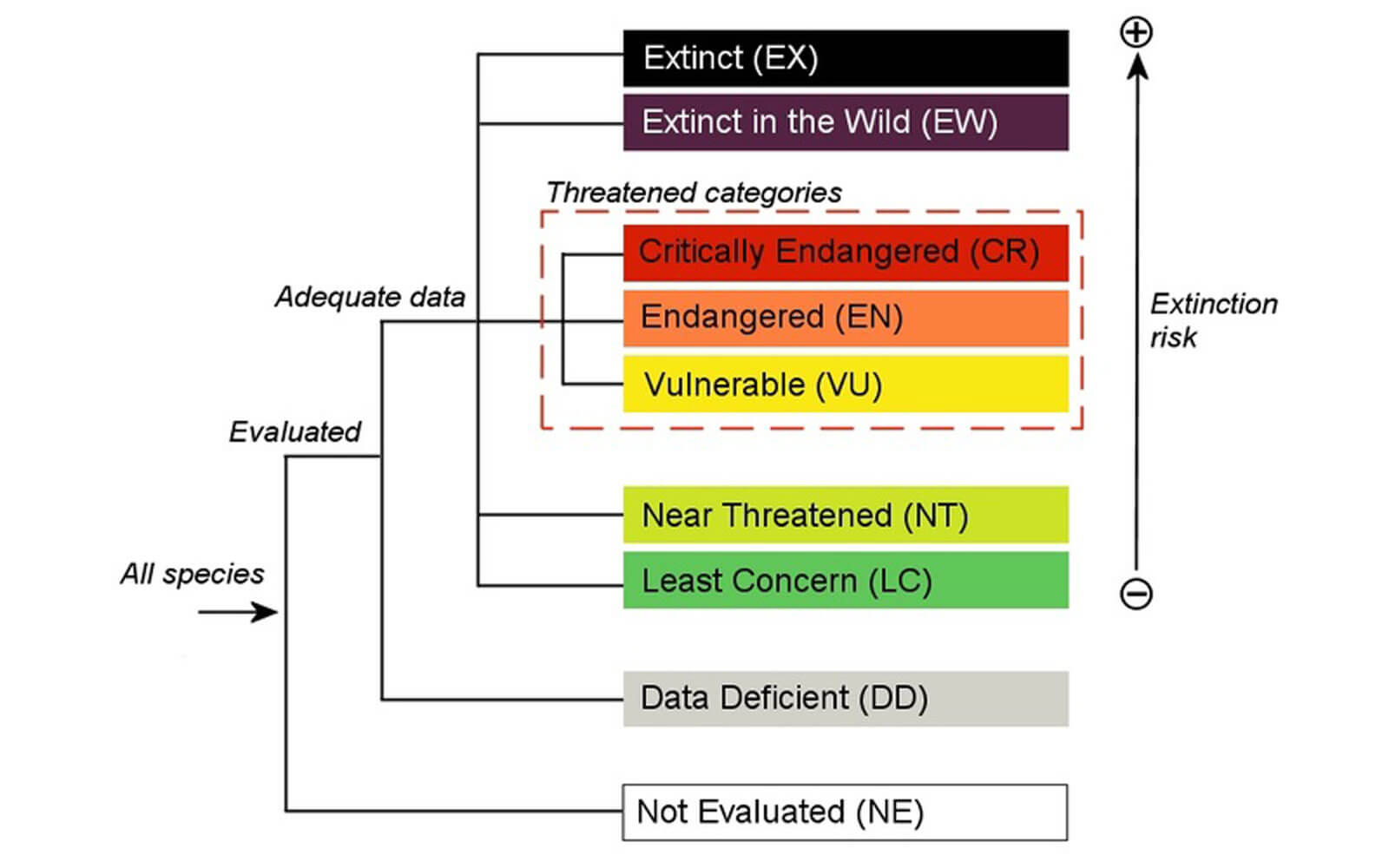
The IUCN Red List extinction risk categories
There are several ways in which assessment outcomes are derived, but these are all standardised and follow a strict set of criteria and are usually carried out by taxon experts from the various regions around the world and coordinated through 186 Species Survival Commission (SCC) Specialist Groups. For amphibians, there is only one broad specialist group (the Amphibian Specialist Group) for the entire Class, compared to, for example, 36 mammal specialist groups. Over 10,000 voluntary experts contribute to these groups and help produce threat status assessments. Over 1000 people have contributed to amphibian assessments in the last decade, producing the 2nd Global Amphibian Assessment and the State of the World’s Amphibians report. This work assessed the extinction risk of 8,011 species worldwide. Key outcomes from this include the following:
- 41 % of amphibians are globally threatened with extinction, making them the most threatened vertebrate group.
- A further 58.4% are considered Near Threatened or Data Deficient (which will likely include a high proportion of threatened species.
- 2 in 5 amphibians are threatened with extinction
- The number of amphibian extinctions could be as high as 222.
- Habitat loss (especially caused by agriculture) remains the most common threat to amphibians, affecting 93% of threatened species, followed by 29% of species affected by the emerging threat of Climate Change, and 22% impacted by Disease.
The Red List Index provides an idea of how threatened a group of species is over time. For most groups the trajectories are not good and continues to decline for amphibians in particular. Fewer than 2% of amphibian species have shown an improvement in their status since 2004, making it evident that investments in amphibian conservation must be significantly scaled up to reverse the ongoing extinction crisis. These trends are mirrored in southern Africa, where we are currently finalising Red List assessments for 246 frog species from 10 counties in the region. Of South Africa’s 135 species, 26% fall into the threatened categories, with habitat loss and transformation remaining the primary threat. Four species are considered Critically Endangered, 15 are Endangered, 10 Vulnerable, 5 Near Threatened, and one Data Deficient (down from 11 previously Not Evaluated and 4 Data Deficient).
KwaZulu-Natal hosts South Africa’s highest frog species richness compared to other provinces (71 species, of a total of 135), thanks to its diversity of habitats and subtropical climate. Of these, one species now considered Critically Endangered – Bilbo’s Rain Frog (Breviceps bagginsi) and four are Endangered. These include Pickersgill’s Reed Frog, Hyperolius pickersgilli, the Long-toed Tree Frog, Leptopelis xenodactylus, the Mistbelt Chirping Frog, Anhydrophryne ngongoniensis, and an undescribed Rain Frog from the Boston area. These assessments will be published on the IUCN Red List website in 2025 once finalised.
Our most local threatened species, the Kloof Frog, Natalobatrachus bonebergi, is likely to be downlisted to Near Threatened, based on its fairly wide distribution both in KwaZulu-Natal and the Eastern Cape Province. However, the threats facing the species in KwaZulu-Natal, where much of the forest habitat of this species has been historically lost to sugarcane cultivation and other agricultural activities. Additional impacts as a result of sugarcane plantations include spraying of agricultural chemicals and water abstraction. Extensive conversion of sugarcane to macadamia plantations is occurring and presents the same issues. Loss of habitat caused by forest clearing of forest vegetation and pollution are the main threats to this species and are likely increasing, including in protected areas. Harvesting of natural resources from certain tree species is also likely to impact on shade level, which is of primary importance for selection of egg deposition sites. Livestock grazing and feral wild pig activity are also tangible increasing threats, also within protected areas. Mining for marble and limestone also continues to cause direct habitat loss and likely contributed to possible extinctions in the part. Deteriorating water quality in streams as a result of contamination from solid waste (storm water overflow) and siltation of streams as a result of upstream urbanisation poses an increasingly significant threat to this species. While alien invasive vegetation has been observed in parts of its range, the species does appear to utilise some invasive species, such as ginger, for egg attachment.
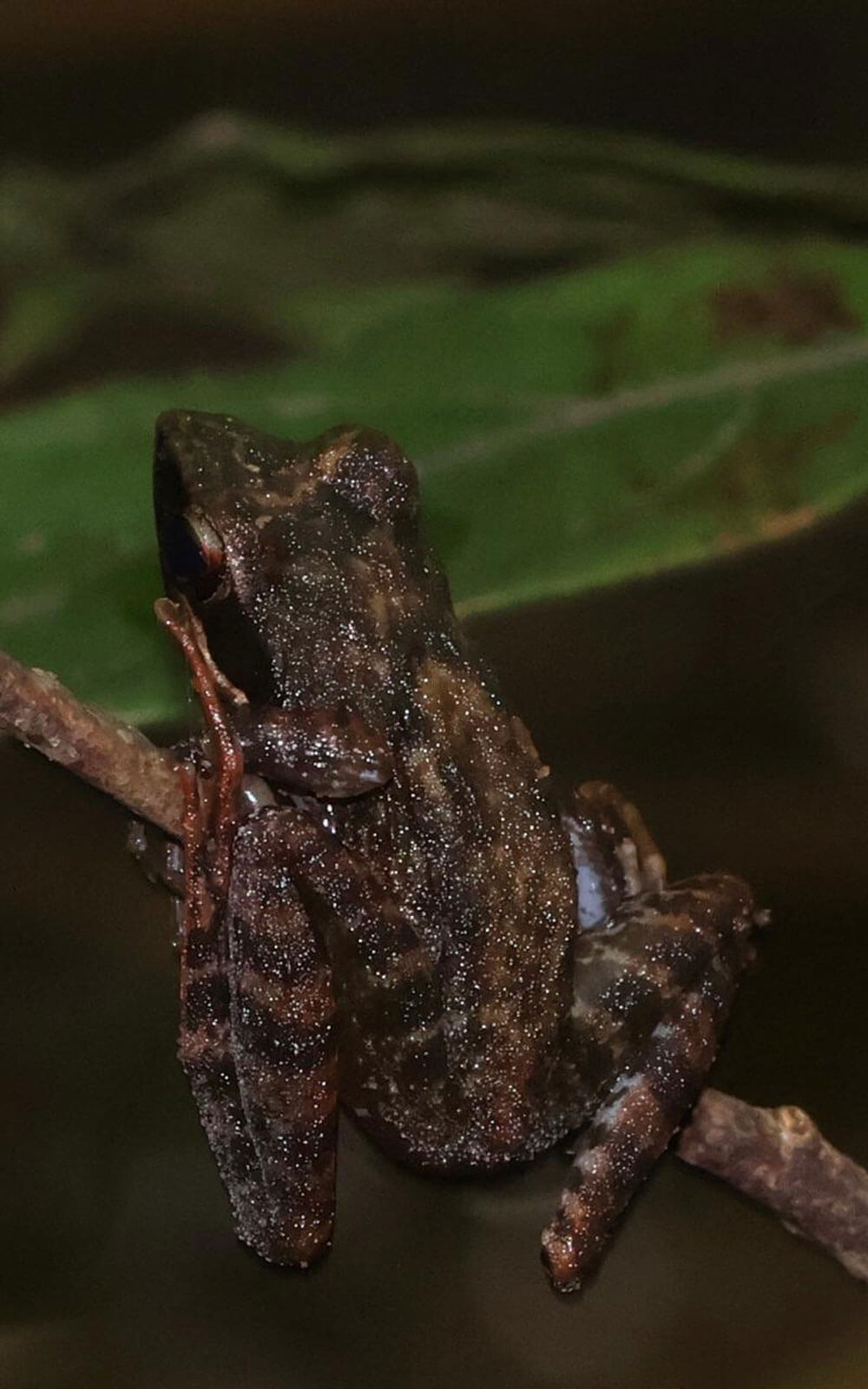
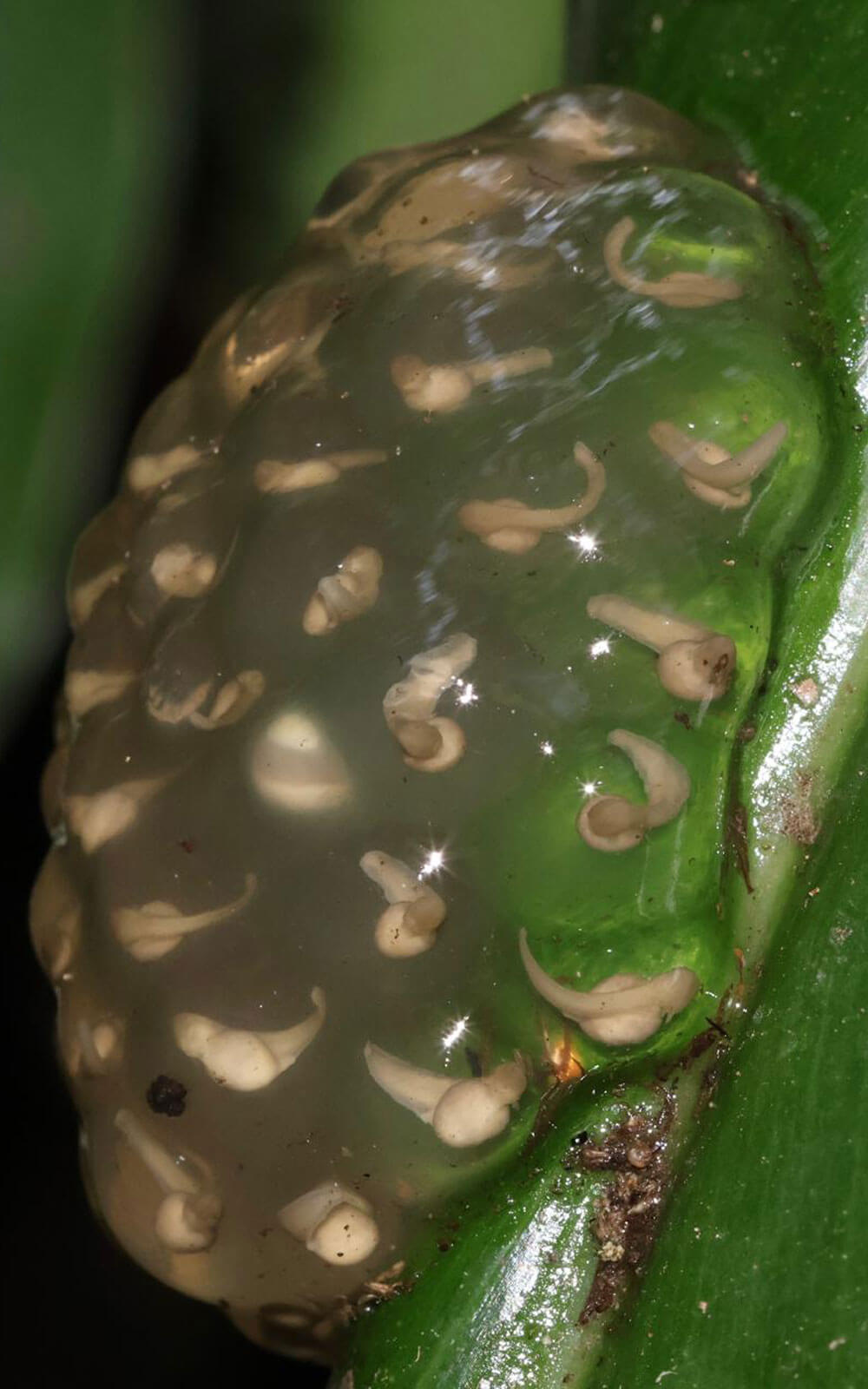
The Kloof Frog lays distinctive egg clumps which rely on healthy streams to complete development
This species is the emblem of the collaborative local Conservancy ‘Mend the Molweni’ project which aims to highlight and address the severe water quality issues facing this, and other streams and rivers in the Upper Highway area of Durban. These issues include discharge of overflow sewage from stormwater into the river, which of course is a major threat not just to this sensitive species, but also human health.
Pickersgill’s Reed Frog, Hyperolius pickersgilli is restricted to the KZN coast and remains Endangered. This is another habitat specialist found in the coastal wetlands and these frogs depend on reed bed habitats for their survival. However, these wetlands face significant threats from agricultural and industrial activities, urban development, sedimentation, and pollution. The fragmentation and degradation of these habitats mean that the populations, although they may appear stable, are under significant pressure and risk of decline.
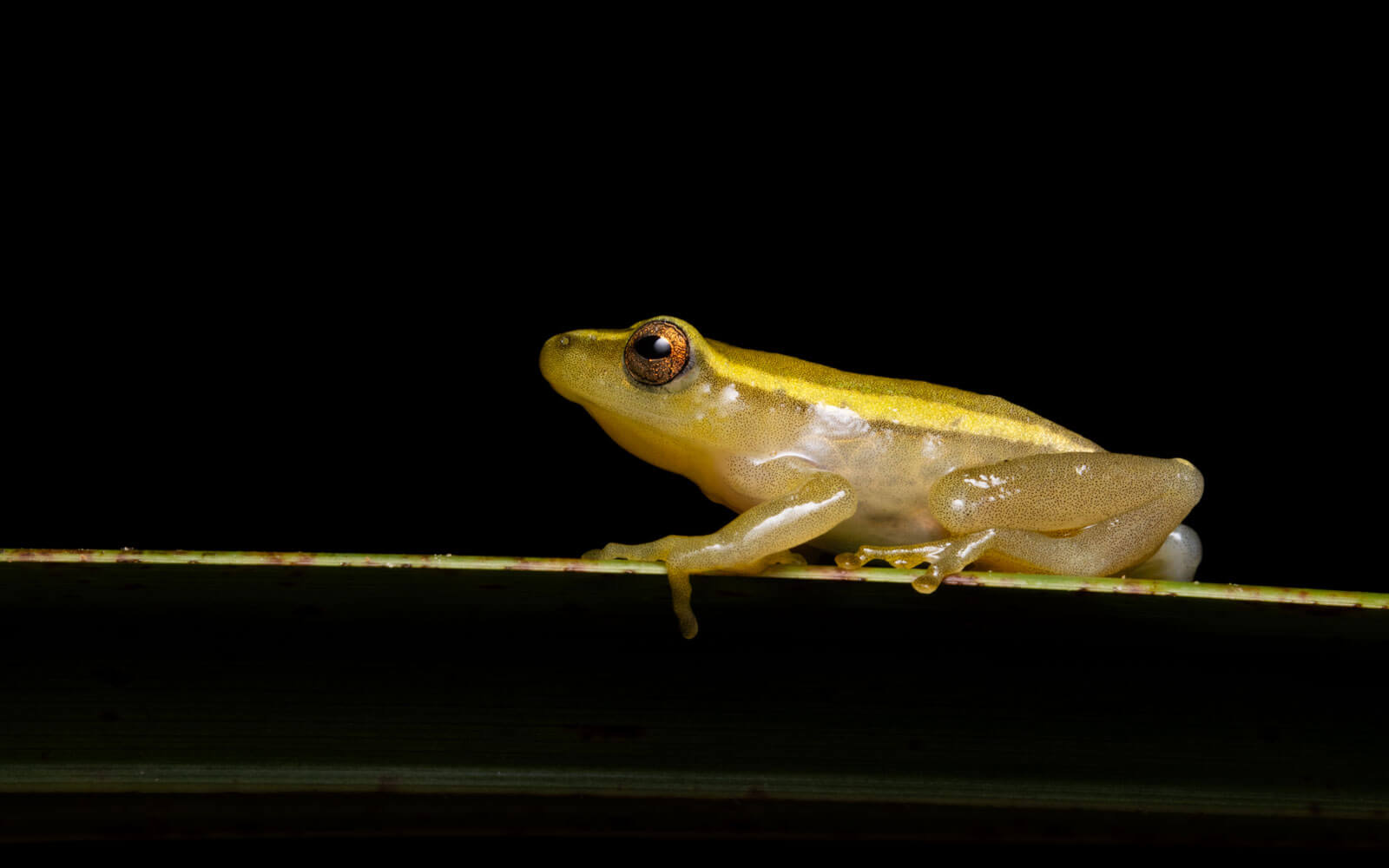
The Endangered Pickergsill’s Reed Frog, known only from the KwaZulu-Natal coastline
And further inland the Endangered Long-toed Tree Frog (Leptopelis xenodactylus) is a habitat specialist found in the grassland wetlands of KwaZulu-Natal. These frogs rely on intact wetland ecosystems for breeding and sustenance. Unfortunately, wetlands are among the most threatened ecosystems globally due to agricultural expansion, urbanisation, and climate change. The destruction and fragmentation of these habitats lead to significant population declines. The frog’s limited dispersal ability and specialised habitat requirements mean that while populations may persist in small, isolated patches for some time, their long-term survival is at serious risk.
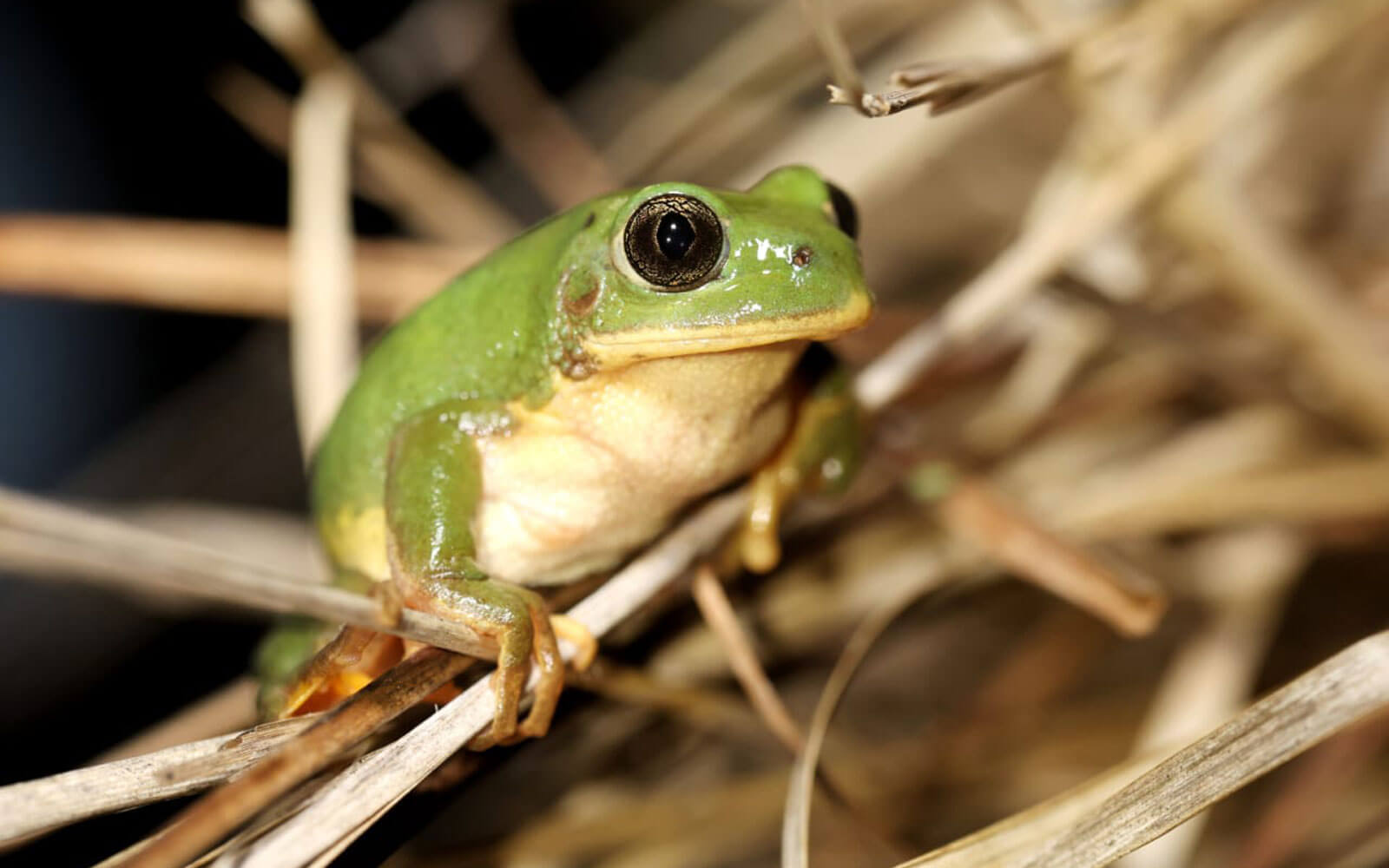
The Endangered Long-toed Tree Frog occurs in remaining patches of grassland wetland in the southern Drakensberg and KZN Midlands

About the author
Jeanne Tarrant, aka the “Frog Lady”, has worked in amphibian conservation and research for 18 years. Her passion for amphibians was ignited when she enrolled at North-West University in 2006 and went on to complete an MSc (2008, cum laude) and PhD (2012) through the African Amphibian Conservation Research Group. Thereafter, she conceptualised the Endangered Wildlife Trust’s Threatened Amphibian Programme (TAP) and ran successful projects across South Africa focused on the country’s threatened frog species for 12 years. In 2024 she embarked on a new amphibian-focused venture in the form of Anura Africa.
At Anura Africa, we aim to implement landscape-level amphibian conservation supported by scientific evidence and research. Anura Africa is committed to advancing amphibian conservation by identifying needs and knowledge gaps in South Africa and across the continent, bolstering research capacity through citizen science and partnerships with academic institutions, and implementing conservation actions informed by evidence. We strive to conserve and develop sustainable landscape-level habitat protection by implementing best practice natural resource management interventions aimed at ensuring the conservation of critical amphibian habitat. Our approach is guided by global amphibian conservation priorities, with a focus on enhancing ecosystem resilience and fostering species adaptation. Integral to our mission is supporting mindset shifts towards African amphibian conservation by improving awareness of the importance of amphibians, facilitating skills transfer, and strengthening local capacity. In her role as chair for the southern Africa regional working group for the IUCN’s Amphibian Specialist Group, Jeanne is well-placed to support these objectives.
In 2020, Jeanne was the recipient of the prestigious Whitley Award, or “Green Oscar” for her work in conservation, a career highlight with Sir David Attenborough narrating this short video. This award is given to grassroots conservationists from the global south – i.e., Africa, Asia and South America. Jeanne was one of 112 applicants, short-listed down to 6 winners, and the only recipient with a project focused on amphibians. Edward Whitley, founder of the Whitley Fund for Nature, said that Jeanne is an inspiring leader who tirelessly advocates for amphibians – an often-overlooked group. “We hope that this award will allow her to spread her important message far and wide and bring about real change for amphibians and their habitat through science, policy, and community education.” In 2024, Rolex recognised Jeanne’s work (one of 1500 applicants) through an exceptional small grant linked to the Rolex Awards for Enterprise, one of the pillars of the Rolex Perpetual Planet initiative, catalysing the launch of Anura Africa.
Anura Africa’s vision is to use research and conservation management to promote the resilience of ecosystems in multi-use landscapes. We advocate for amphibians as indicators of microhabitat health within larger conservation areas. By focusing on these indicators, Anura Africa aims to ensure the health of entire ecosystems, benefiting a wide range of species and ecological functions.
Instagram: anura_africa
Facebook: Anura Africa
LinkedIn: Anura Africa NPC